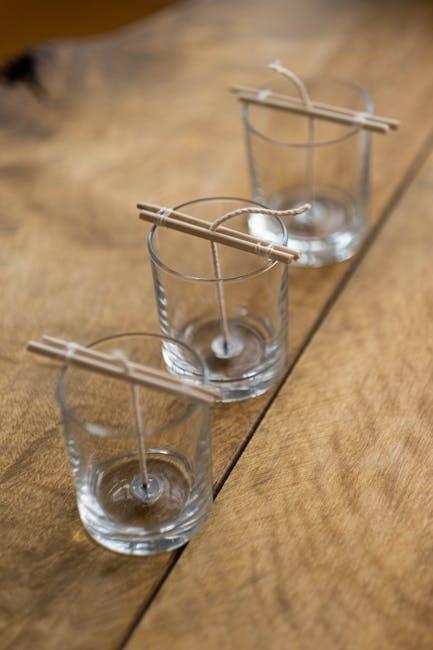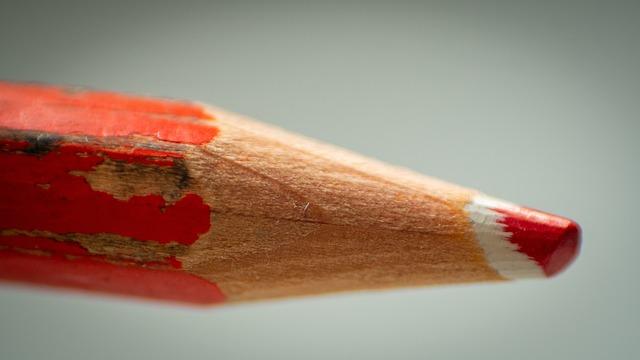Table of Contents
- Understanding the Basics of Game Controller Outlines
- Essential Tools and Materials for Drawing Game Controllers
- Step-by-Step Guide to Creating Proportional Outlines
- Tips for Adding Details and Textures to Your Drawings
- Common Mistakes to Avoid When Outlining Game Controllers
- Q&A
- The Conclusion
Understanding the Basics of Game Controller Outlines
When diving into the world of game controller outlines, it’s essential to grasp the core elements that define their structure and form. Game controllers vary widely in design, but most share common features that can serve as a foundation for your drawings. Focus on the basic anatomy of a controller, which typically includes:
- Body Shape: The overall silhouette, which can be unique to each console.
- Buttons: The various controls, including triggers, bumpers, and face buttons.
- Analog Sticks: Often found in pairs, these are crucial for navigation.
- D-Pad: A directional control that adds versatility to gameplay.
To create an accurate outline, pay attention to the proportion and placement of these elements. Utilize references and study real controllers to understand how different shapes interact and complement each other. For instance, the distance between buttons can change the usability and design aesthetic, providing insight for your outline. Additionally, consider the ergonomic features designed to enhance user comfort—a key consideration in modern game controller design.
To help visualize the various parts and their relationships, you can create a simple table that organizes the main components of a controller. Structure it to capture essential details like size and function, offering a quick reference that can guide your drawing process:
| Component | Size (Approx.) | Function |
|---|---|---|
| Body | Medium | Main housing for controls |
| Buttons | Small | Primary input for actions |
| Analog Sticks | Small to Medium | Directional control |
| D-Pad | Small | Directional input |
By breaking down the components of a game controller, you can enhance your understanding and create more accurate and aesthetically pleasing outlines. Embrace creativity and keep experimenting with different styles, layouts, and designs to make your drawing stand out.


Essential Tools and Materials for Drawing Game Controllers
To effectively draw game controllers, having the right tools and materials is crucial. Start with a solid foundation by selecting a high-quality sketchbook or drawing pad. Look for options with appropriate weight and texture that can handle different drawing instruments. A smooth paper surface is ideal for pencil sketches, while textured options may suit ink or marker work better. Additionally, having a selection of graphite pencils (ranging from H to B grades) will allow for versatility in shading and detailing. Don’t forget to include a kneaded eraser to correct mistakes and add highlights seamlessly.
Incorporating digital tools can elevate your drawing process significantly. A graphic tablet paired with drawing software (like Adobe Photoshop or Procreate) enables you to create clean lines and experiment with layers effortlessly. Investing in a stylus that feels comfortable in your hand is essential for precision and control. For those who prefer a non-digital approach, keep a set of fine liners and brush pens on hand. These tools offer a range of line weights, perfect for outlining and adding depth to your game controller designs.
Here’s a concise comparison of traditional and digital materials for drawing:
| Traditional Tools | Digital Tools |
|---|---|
| Pencils (varying grades) | Graphic Tablet |
| Fine Liners | Drawing Software |
| Brush Pens | Stylus |
| Kneaded Eraser | Undo Function |
By combining traditional techniques with innovative digital elements, you create an expansive toolkit that caters to various styles and preferences. This comprehensive set of materials will not only enhance your drawing experience but also help you produce polished and dynamic outlines of your favorite game controllers.


Step-by-Step Guide to Creating Proportional Outlines
Creating a game controller outline requires a keen eye for proportions and shapes. Start by gathering reference images of various game controllers to understand their unique features. Once you have a selection of images, it’s beneficial to sketch a baseline grid on your paper or digital canvas. This grid will serve as a guide for maintaining proportionality throughout your outline. Keeping your workspace organized will help ensure that your proportions remain consistent.
Next, focus on the outer shape of the controller. Use simple geometric forms as your foundation. For example, many controllers feature a rounded rectangle or an oval at their core. Draw a light sketch of this shape, then gradually refine its edges. After the main body is complete, start adding distinct components such as buttons, thumbsticks, and triggers. To maintain a harmonious design, consider using a layered approach to layout:
| Layer | Details |
|---|---|
| Base Shape | Outline the overall form with curves |
| Buttons | Position at strategic points (e.g., thumbs and triggers) |
| Details | Add texture and highlight specific features |
enhance your outline with shading and depth. Use varying line thicknesses to distinguish between foreground elements and the background, giving your controller outline a more dynamic look. Once satisfied with the outline, consider adding some finishing touches or color accents to differentiate between the varied components. This not only adds character but also allows for a more authentic representation of your favorite gaming device.


Tips for Adding Details and Textures to Your Drawings
When it comes to enhancing your game controller outline drawing, paying attention to details and textures can significantly elevate the overall quality of your artwork. Start by implementing shading techniques that imitate the natural light sources. Use softer pencils or charcoal to create subtle gradients across the surfaces of the controller. This will give your illustration depth and a realistic feel. Remember to observe how light interacts with different materials. Take note of where shadows typically fall and replicate that in your drawing.
Textures are crucial for enhancing realism and making your drawing pop. Consider incorporating different line techniques to depict various surfaces. For example, use cross-hatching or stippling to represent the rubbery grips and smooth plastic components of the controller. Experiment with varying line weight to convey distance and texture. The more varied your line styles, the more dynamic your artwork will appear.
Here are a few additional tips on adding intricacies to your drawings:
- Use References: Look at real images of game controllers to inspire accurate details.
- Incorporate Brand Logos: Include popular game labels or symbols for authenticity.
- Highlight Button Features: Add reflections or glows to buttons for a modern touch.
Take your time and be patient. Detailing is where your unique artistic voice can truly shine—don’t hesitate to experiment with various styles until you find one that resonates with your vision.


Common Mistakes to Avoid When Outlining Game Controllers
When outlining game controllers, many artists and designers often fall into common traps that can hinder their creative process. One of the most prevalent mistakes is neglecting the ergonomic aspects of the controller’s design. Controllers are not just functional; they must also be comfortable to hold for extended gaming sessions. To avoid this pitfall, focus on the following features in your outline:- Grip contouring: Ensure your design considers how the player’s hands will wrap around the device.
- Button placement: Strategically position buttons to minimize finger strain and enhance reachability.
- Weight distribution: Reflect on how the weight of the controller impacts usability and overall handling.
- Reference real controllers: Study popular models to understand proportionate measurements better.
- Use grid lines: Implement grids in your outline to achieve symmetry and maintain consistency.
- Focus on simplicity first: Establish a solid, simple outline before adding intricate details.
- Highlighting material types: Consider including options like plastic, rubber, or metal in your design notes.
- Indicating textures: Note the importance of surface textures for grip and tactile feedback, such as matte vs. glossy finishes.
- Drawing functional elements: Make sure to outline ports and other features clearly, thinking about their practical applications.
Q&A
Q&A on Game Controller Outline Drawing
Q1: What is a game controller outline drawing? A: A game controller outline drawing is a simplified, often monochromatic representation of a game controller. It typically highlights the basic shape, buttons, and joystick placements without intricate details or colors, serving as a foundational step for artists looking to depict or design controllers in various styles.Q2: Why is it important to understand the outline of a game controller? A: Understanding the outline of a game controller is critical for artists and game designers. It helps in grasping the proportions and ergonomic features of the controller, ensuring that any subsequent designs or illustrations maintain a realistic and functional appearance. Additionally, a clear outline serves as a blueprint for developing custom controllers for different gaming experiences.
Q3: How can I create my own game controller outline drawing? A: To create your own game controller outline drawing, start by gathering reference images of various controllers for inspiration. Use light pencil strokes to sketch the basic shape, then outline the key features like buttons and joysticks. You can refine your drawing by adding details and adjusting proportions until you achieve the desired look. Digital drawing tools can offer additional flexibility and options for enhancing your design.
Q4: Are there specific techniques to improve my outline drawing skills? A: Yes, several techniques can enhance your outline drawing skills. Practice by sketching a variety of game controllers from different angles. Focus on using simple shapes to create the overall structure before adding detail. Paying attention to proportion and symmetry can also aid in creating a more polished look. Critiquing your work and studying other artists’ outlines can provide further insights and inspiration.
Q5: Can outline drawings be used for purposes other than art? A: Absolutely. Outline drawings of game controllers can be valuable in various contexts beyond art. They can be utilized for prototypes in game design, instructional materials for teaching about game mechanics, or marketing purposes when showcasing new controller designs. Furthermore, they can assist in creating user manuals by providing clear visual references.
Q6: Where can I find resources or templates for game controller outline drawings? A: Numerous online platforms offer resources and templates for game controller outline drawings. Websites dedicated to art and design, like Dribbble or DeviantArt, often feature user-uploaded templates. Additionally, you can explore graphic design software that provides pre-made templates for customization, allowing you to experiment and develop your unique designs with ease.
Q7: What are some common mistakes to avoid when drawing game controller outlines? A: Common mistakes include overlooking proportions, which can lead to unrealistic designs. Failing to properly position buttons and joysticks may also hinder functionality in your illustrations. Additionally, avoiding overly complex details in the outline phase is key; remember that the purpose of an outline is to establish shape and placement rather than to capture every intricate feature.
Q8: How can I use my outline drawing to create more detailed artwork? A: Once you have a solid outline drawing, you can build on it by refining details, adding color, and incorporating textures. Use the outline as a base to experiment with different graphic styles, such as realism, cartoonish interpretations, or even abstract representations. The outline serves as a guide to ensure that all components remain proportional and harmonious as you enhance your artwork.—These questions and answers provide a well-rounded perspective on creating and utilizing game controller outline drawings, catering to both budding artists and seasoned designers alike.




0 Comments